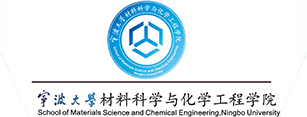报告时间:2014年10月17日(星期五)10:00
报告地点:龙赛理科楼南楼210报告厅
报告人:Sarah H. Tolbert
报告人简介:
Sarah H. Tolbert is a professor in the Departments of Chemistry and Biochemistry and Materials Science and Engineering at UCLA. Prior to joining the faculty at UCLA, she received a B.S. from Yale University, a Ph.D. from U.C. Berkeley, and was an NSF postdoctoral fellow at U.C. Santa Barbara. Her research focuses on controlling nanometer-scale architecture in solution-processed nanomaterials to generate unique optical, electronic, magnetic, structural, and electrochemical properties. Her group specifically focuses on solar energy harvesting, electrochemical energy storage, nanomagnetics, and new ultra-hard materials. She also leads a program aimed at bringing nano-concepts to high school students in the greater LA area. Professor Tolbert is the recipient of a number of awards including the Office of Naval Research Young Investigator Award, an NSF CAREER Award, a Beckman Young Investigator Award, and a Sloan Foundation Research Fellowship.
报告摘要:
Amphiphilic assembly of polymeric building blocks provides a powerful method to create complex nanoscale architectures through low-cost processing routes. For example, block-copolymer templating of inorganic colloids can be used to produce periodic nanoporous inorganic materials that combine high surface area, open porosity, and mechanical flexibility. Such materials can form the basis for high power electrochemical energy storage materials known as pseudocapacitors. In such materials polymer derived porosity can produce a very desirable combination of electrical connectivity, electrolyte access to the interior of the material, ample surface redox sites, and very short solid-state diffusion lengths for lithium ions. With idealized architectures, a phenomenon called intercalation pseudocapacitance can arise, where traditional battery-like intercalation become kinetically facile, producing a unique combination of high energy density and high power density. In addition to providing opportunity to create new materials for energy storage, polymer assembly can be used to create optimized architectures for solar energy harvesting, specifically in conjugated semiconducting polymer that can form the basis for organic photovoltaics. Here amiphiphlic assembly can be used to create semiconducting polymers that can form cylindrical micelles in water. These polymers can be paired with an excited state electron acceptor such as an amphiphilic fullerene derivatives to create water-soluble polymer/fullerene assemblies that show a range of exciting phenomena. Novel properties include ultra-fast excited-state electron transfer in solution and the formation of extremely long-lived charge separated species.
欢迎广大师生踊跃参加!

